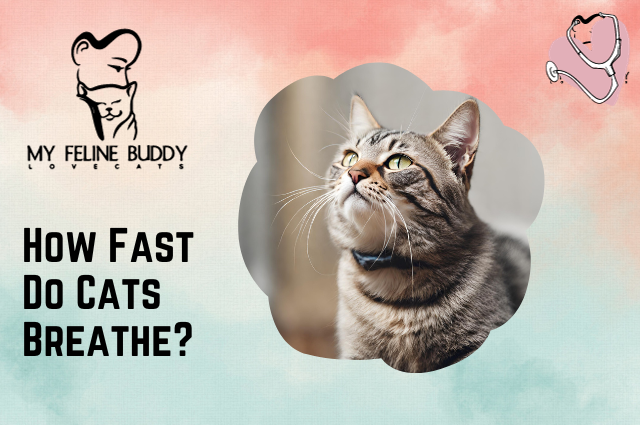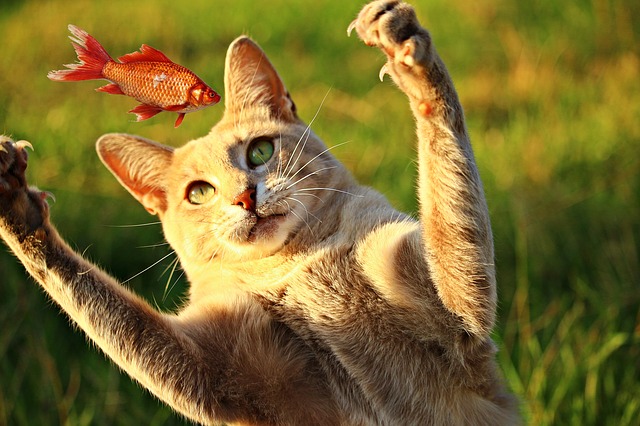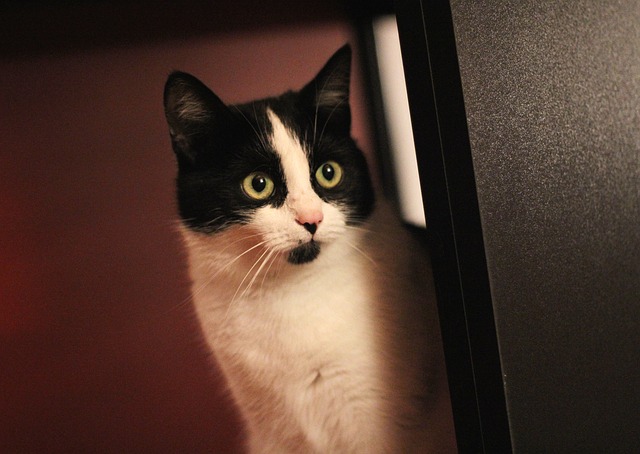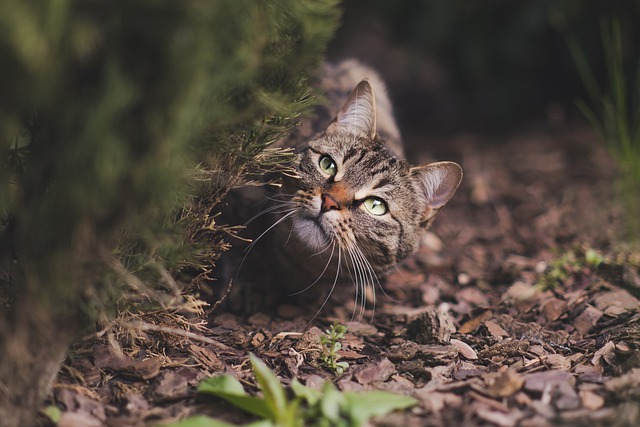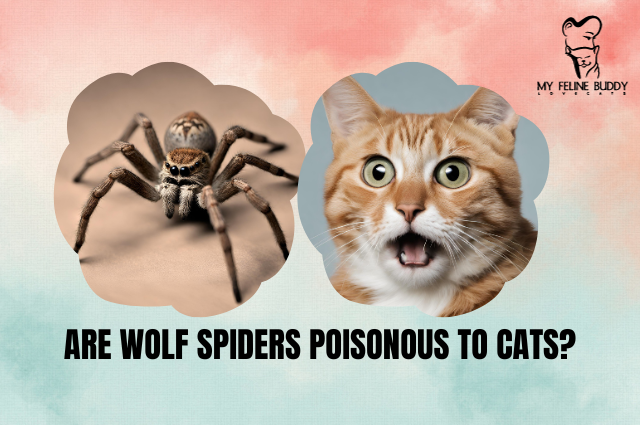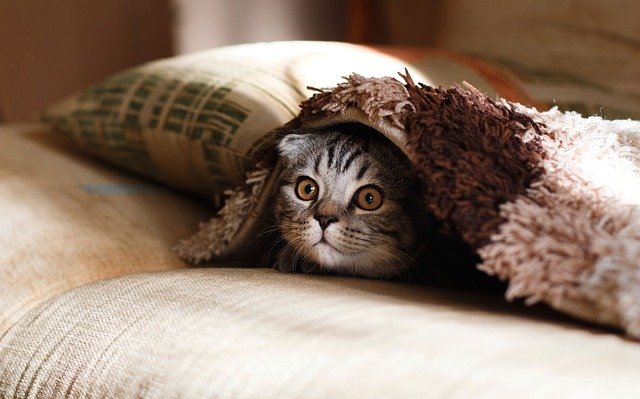How Fast Do Cats Breathe?
Understanding your
Cats have a resting breathing rate that typically ranges from 16 to 40 breaths per minute, depending on factors like age and health. During physical activity or when they’re excited, their breathing rate can go even higher, and that’s perfectly normal.
Journal of Veterinary Internal Medicine research reveals that understanding your
In this article, we will also explore two important concepts related to
Bradypnea is when your
The Normal Cat Breathing Rate
Your
Kittens and younger cats tend to have faster breathing rates, while older cats may breathe more slowly.
Research from the Journal of Feline Medicine and Surgery confirms this range, noting that fluctuations are perfectly normal. Cats, like us, can have variations in their breathing rate depending on their emotional state and the environment they’re in.
During periods of rest, your
Remember that knowing your
What Is Bradypnea?
Bradypnea is when your
Research conducted at the Veterinary Teaching Hospital at the University of California, Davis, indicates that bradypnea can occur due to various causes, including heart issues, neurological disorders, and certain medications.
But what are the health issues associated with bradypnea, and how is it diagnosed? We’ll answer these questions and provide valuable insights into treatment and prevention in the upcoming sections.
Before we dive into that, let’s also explore tachypnea, the opposite of bradypnea. Understanding both conditions is essential for ensuring your
What Is Tachypnea?
In contrast to bradypnea, tachypnea is characterized by rapid breathing in cats. Tachypnea is often a sign that your furry companion is experiencing discomfort or distress.Â
Journal of Veterinary Emergency and Critical Care research states that there are various causes for tachypnea in cats, including respiratory infections, heart disease, allergies, and even obesity.
Understanding the potential health issues associated with tachypnea is crucial for early intervention. We’ll discuss these issues in more detail shortly. But first, how do you know if your
Diagnosing Bradypnea and Tachypnea in Cats
Diagnosing bradypnea and tachypnea in cats typically involves a visit to your veterinarian. It’s important to consult with a professional who can accurately assess your
A vet can conduct a detailed physical examination, including listening to your
These parameters help identify potential issues and guide the diagnosis process. Further tests may be recommended — X-rays or blood tests — to pinpoint the underlying cause of these breathing abnormalities.
Remember, early diagnosis is essential, as it leads to more effective treatment and a better chance of a positive outcome.Â
Treatment and Prevention
Now that we’ve discussed diagnosis, let’s move on to the crucial topic of treatment and prevention.
For Bradypnea:
- Medication: Treatment may involve medications to address the underlying cause, such as heart medications or drugs to manage neurological issues.
- Lifestyle Adjustments: Depending on the cause, your vet might suggest various lifestyle changes, whether that be reduced physical activity or changes in your
cat ‘s diet.Â
For Tachypnea:
- Antibiotics: If the cause is a respiratory infection, antibiotics may be prescribed.
- Cardiac Medications: For heart-related tachypnea, your vet may prescribe medications to manage the condition.
- Allergy Management: If allergies are the culprit, your vet may recommend allergy management strategies.
Preventing these conditions often involves maintaining your
- Regular Vet Check-ups: Schedule regular check-ups with your veterinarian to catch any issues early.
- Maintain a Healthy Weight: Breathing issues can be caused by obesity, so ensure your
cat maintains a healthy weight with the right diet and exercise. - Stress Reduction: Minimize stress in your
cat ‘s environment as it can exacerbate respiratory problems. - Dental Health: Breahting can also be affected by poor dental health and subsequent infections, so pay attention to your
cat ‘s oral hygiene.
Read more: What causes neurologic disorders in cats?
Factors Affecting Cat Breathing Rate
A
Age and Life Stage: Kittens and young cats typically have faster breathing rates than their older counterparts. Knowing what’s normal for your
Temperature and Environment: Cats may breathe faster in warmer environments or when they’re exposed to stressors like loud noises or unfamiliar surroundings.
Stress and Anxiety: Stress can lead to increased breathing rates. Reducing stress in your
Physical Activity and Exercise: After playtime or exercise, your
Underlying Medical Conditions: As discussed earlier, underlying health issues can significantly impact your
You might also like: What is dexamethasone used for in cats?
How to Measure A Cat ‘s Breathing Rate
Measuring your
- Find a Quiet Space: Choose a quiet environment where your
cat feels comfortable. - Observe Your
Cat : Watch yourcat as they rest or relax, ensuring they are not engaged in any strenuous activity. - Count the Breaths: Use a timer and count the number of breaths your
cat takes in one minute. You can also count for 15 seconds and then multiply by four to get breaths per minute. - Record the Rate: Note down the breathing rate and compare it to the typical range for your
cat ‘s age and size. - Repeat for Accuracy: It’s a good idea to repeat this process a few times and take an average to ensure accuracy.
By knowing your
Read more: How long do cats live with intestinal lymphoma?
Frequently Asked QuestionsÂ
What is the average breathing rate for a healthy cat ?
A: The average breathing rate for a healthy
How do I know if my cat has bradypnea or tachypnea?
A: Bradypnea is characterized by unusually slow breathing, while tachypnea is marked by rapid, shallow breaths. If you notice a consistent and significant change in your
What can cause sudden changes in a cat ‘s breathing rate?
A: Sudden changes in breathing rate can result from various factors, including infections, allergies, heart conditions, stress, and obesity. Identifying the cause of these changes is essential for timely intervention.
When should I seek veterinary care for my cat ‘s respiratory distress?
A: If your
Are there home remedies to alleviate mild breathing issues in cats?
A: For mild respiratory issues, maintaining a clean and stress-free environment, ensuring proper hydration, and reducing exposure to potential allergens can help. However, always consult your veterinarian for advice tailored to your
Can environmental factors like smoking affect a cat ‘s breathing?
A: Yes, environmental factors like smoking can negatively impact your
You might also like: Mediworm for Cats
Final Thoughts
Understanding your
Monitoring their respiratory health, recognizing signs of bradypnea and tachypnea, and taking early action when needed can significantly improve their overall well-being.
By staying vigilant and proactive, you can ensure that your feline friend enjoys a long and healthy life. Regular vet check-ups, a supportive environment, and a little knowledge go a long way in ensuring your
Resources
- American Association of Feline Practitioners – A reputable source for feline health information, offering valuable insights and guidelines.
- Journal of Veterinary Emergency and Critical Care – A scientific journal with articles on emergency and critical care, including studies on feline respiratory health.
- The Humane Society – An organization dedicated to the well-being of animals, providing useful information on
cat health and care.
